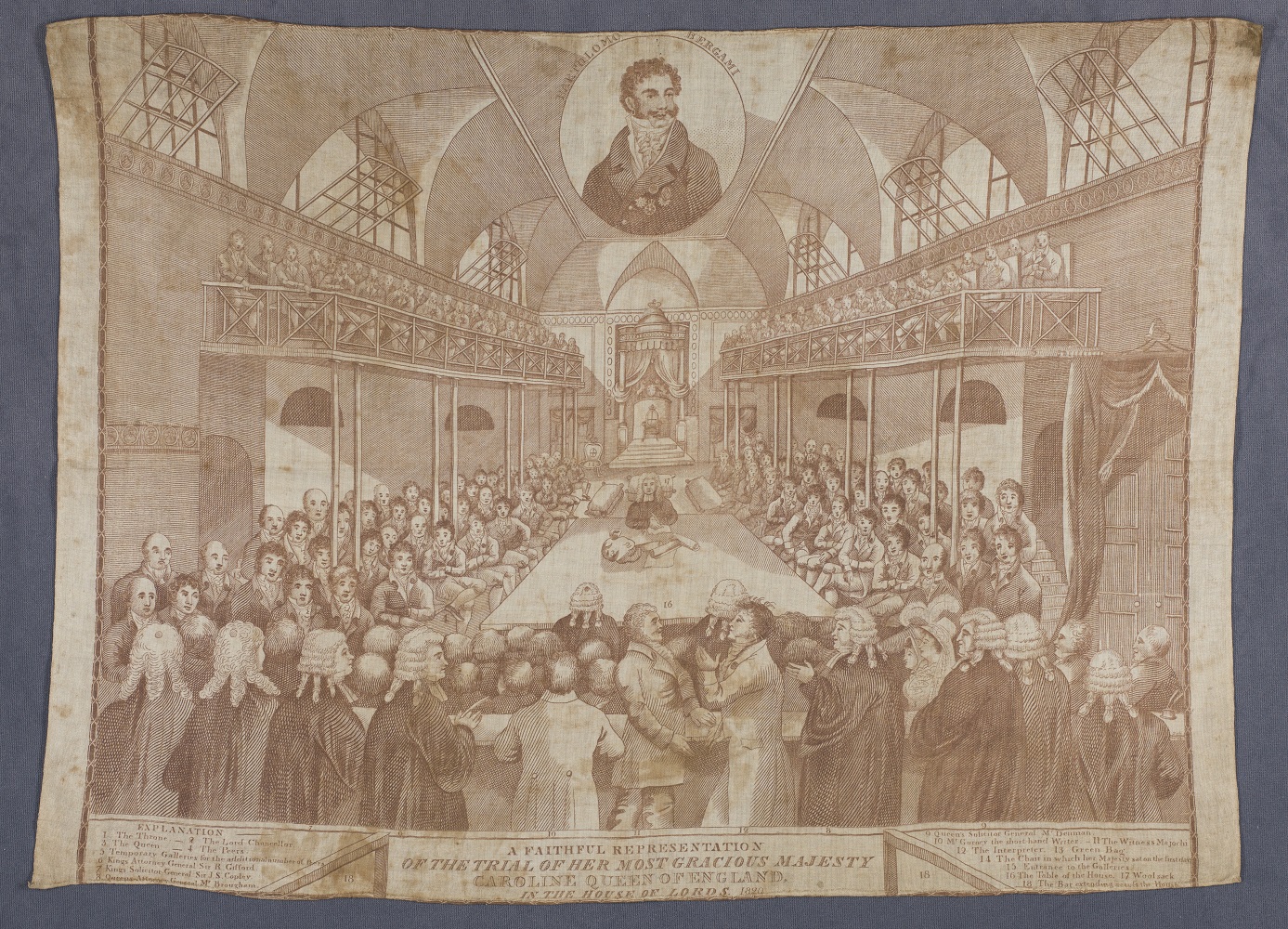
“A realistic view of the House receding in perspective to the Throne, above which is inset an oval bust portrait of Bartolomo Bergami, wearing a cluster of five decorations, see British Museum Satires no. 13810. Some figures and objects have numbers referring to notes in the lower margin. Counsel are in a line across the foreground on each side of the centre figures, who are Gurney the short-hand writer and Majocchi facing the interpreter. The Queen is inconspicuously seated behind Brougham, next a smaller lady who must be the tall Lady Anne Hamilton. Eldon is at the Table in front of the Woolsack. On the Table is 13 Green Bag [see British Museum Satires no. 13735].”–British Museum online catalogue.
- Title: A faithful representation of the trial of Her Most Gracious Majesty Caroline Queen of England, in the House of Lords, 1820 [graphic].
- Publication: [London] : [publisher not identified], [ca. November 1820]
Drawer 820.11.00.01
Acquired April 2017





